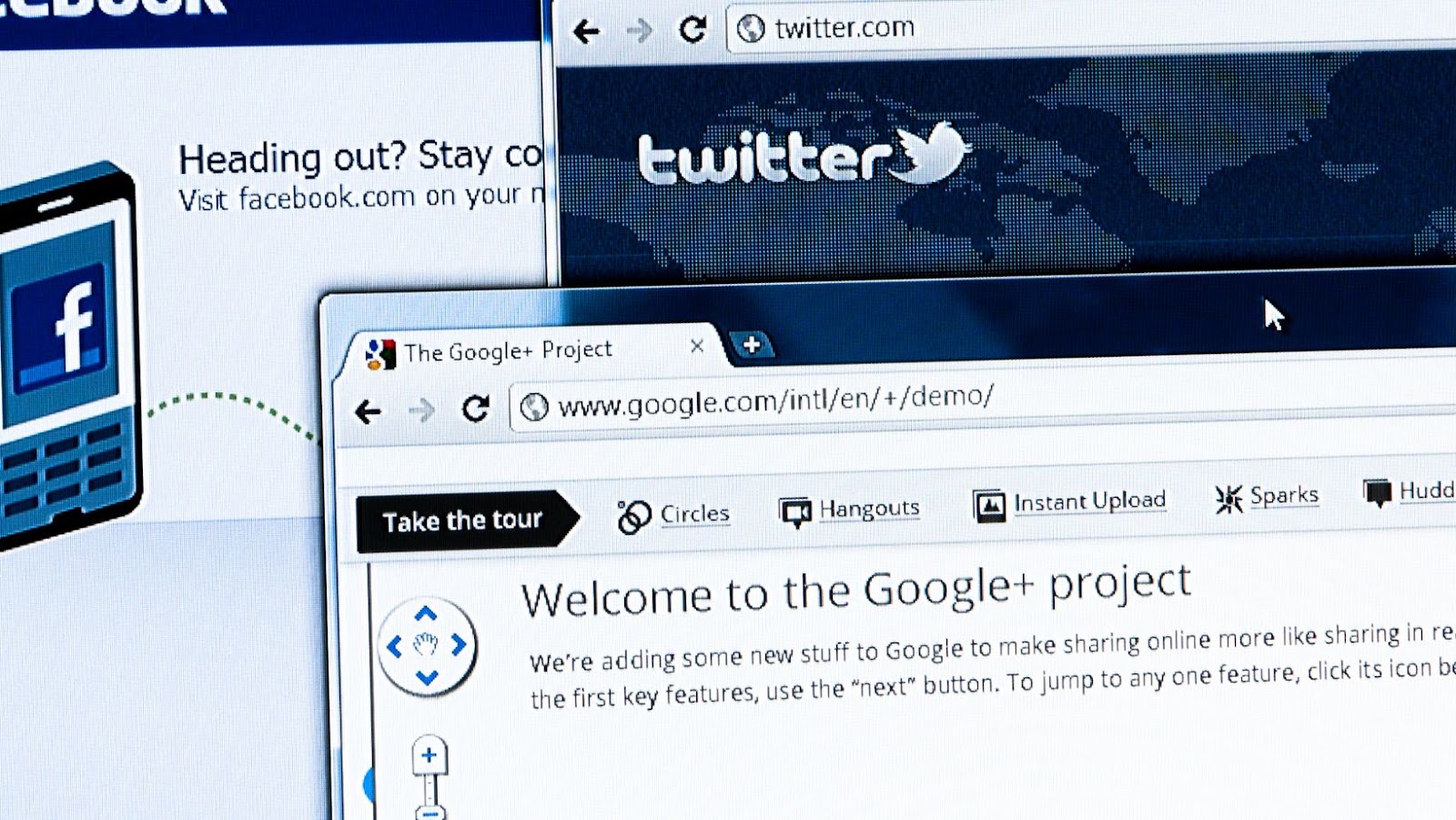Live Audio Rooms and Podcasts on Facebook
With Facebook Live Audio Rooms and Podcasts, you can communicate with your audiences in a more interactive and personal way than other audio media platforms. The benefits of using Facebook in this way include streaming audio content to a wide range of audiences, and driving engagement and interaction.
Understanding the best practices for utilising Facebook Live Audio Rooms and Podcasts is key to success. So let’s dive into some of these strategies.
What are Live Audio Rooms and Podcasts?
Live Audio Rooms and podcasts are digital platforms for people to connect, discuss, and listen to content without leaving their homes. Live Audio Rooms are exclusive audio-only spaces hosted on Facebook where people worldwide can participate in conversations about music, culture, and more. Podcasts are pre recorded episodes that cover various topics typically hosted by individuals or small groups. Both forms of digital media allow users to engage with content creators and other fans, create meaningful connections and share their perspectives.
Live Audio Rooms often feature interactive elements such as polls and quizzes to engage listeners while they discuss topics with others in the room. This platform allows users to express themselves through sound rather than visuals, creating a powerful connection between content creators and audience members.
Podcasts often provide direct access to industry professionals, inspiring stories of success or personal experiences that viewers can easily relate or learn from wherever they are. Through such episodes viewers gain insight on business matters or discover entertaining stories which might otherwise be missed if listening only through radio broadcasts or other traditional media outlets.
Benefits of using Live Audio Rooms and Podcasts on Facebook
Facebook Live Audio Rooms and Podcasts offer content creators numerous opportunities to interact directly with their fans, boost engagement and extend their reach. Here’s a closer look at some of the key benefits associated with utilising Facebook Live Audio Rooms and Podcasts:
1. Expand Audience Reach: Facebook has more than two billion users worldwide, allowing content creators to tap into a new audience they wouldn’t have reached before. By live streaming, you can reach people in real-time who may not have found you otherwise.
2. Boost Engagement: Interacting with your fans in real-time can help create an even deeper connection than normal posts or videos could. Asking questions, encouraging discussion and offering engaging audio content can increase engagement and build loyalty.
3. Generate Revenue: In addition to expanding your audience and boosting engagement, using platforms like Facebook Live Audio Rooms and Podcasts can lead to direct revenue from sponsorships, advertising or donations from fans if you set up the appropriate payment systems for your show.
4. Save Time: Posting pre-recorded podcasts directly to Facebook eliminates the need for converting audio for each platform as well as additional time editing out any cuss words or other explicit language that may not be appropriate on certain platforms.
Setting Up Your Live Audio Room and Podcasts
Using Live Audio Rooms and Podcasts on Facebook for your business can be a great way to reach a wide range of audiences. The key is to set up your page correctly and be aware of the best practices for using Live Audio Rooms and Podcasts on Facebook.
This article will discuss the various aspects you should consider while setting up your Live Audio Room and Podcasts on Facebook.
Creating a Facebook Page
If you intend to use Facebook Live and live audio rooms to broadcast your podcast, it is important to establish a dedicated page for your broadcast. Creating a professional and attractive page can help you reach more people, build an engaged audience and maintain interest over time.
Go to the “Create Page” option on Facebook’s homepage to get started. Select ‘Business or Brand’ as the category, give it a name (preferably something related to your podcast) and then click “Get Started.” From there, fill out all of the profile information fully with bios about yourself and/or presenters that will be featured on the show – be sure you include links or website addresses if other people may have their website or podcast streaming platform. You should also choose a compelling profile photo that accurately reflects what will be discussed within your show’s topics; this could be anything from abstract art related to soundwaves, abstract typography, or any other creative concept related to your show’s content.
You can also upload an internal cover image for display and choose 10 categories that best display what kind of content or discussion will be featured in the broadcasts. Once this is done, click “Done Editing” which will bring up several additional setup menus where further information may need to be entered such as company contact info and more.
From here you’ll want to go ahead and invite people who already follow you so they can join in on upcoming shows via live audio rooms.. Also, be sure to connect any existing assets to your previous audiences, whether it is a blog associated with yourself or any other social media accounts directly related to your broadcasts – this helps ensure all evidence of these successes stay intact while transitioning into producing live audio rooms on Facebook instead!
Setting up a Live Audio Room or Podcast
Live audio rooms and podcasts can be important in engaging your audience. To ensure you have the best sound and the greatest reach, it pays to set up a live audio room or podcast with the appropriate software and hardware for your desired outcome. Many tools are available for creating, hosting and sharing live audio or podcasts on Facebook.
First, you’ll want to select a platform for hosting your radio show or podcast. A variety of services specialise in podcast hosting such as Anchor, SoundCloud, Castbox, Spreaker and Acast. You can also use social media to broadcast podcasts or radio shows directly from Facebook Live Audio or Instagram Live Video.
Once you’ve selected a platform, it’s time to set up your equipment. Start by purchasing quality microphones that best meet your needs; they should always be positioned in front of the speakers — approximately 6 inches away — so they can pick up sound signals. Be sure to choose good-quality headphones that don’t leak out any sound during playback.
Next: configure your room settings correctly so that feedback is eliminated and ambient sounds do not overpower the voices of any participants in the room. It’s inadvisable to boost the gain on certain frequencies as this could result in distortion when broadcasting live on Facebook Live Audio Rooms or Instagram Live Video platforms — keep levels moderate throughout recording sessions if possible. The placement of instruments and other items will also determine how well a show is recorded — try moving instruments around different areas of the room until you find an arrangement that works best for all participants in creating content for broadcast purposes.
For those producing higher-quality recordings, consider investing in additional components such as mixers, particular passes (EQs/Compressors) and additional engineering console equipment like compressors, gates, limiters etcetera). In addition, ensure all connections are wired properly; otherwise your sound won’t be picked up by microphone inputs correctly before hitting reception points such as amplifiers/speakers etcetera . Finally take care when setting inputs/outputs on audio mixing units used since many pieces share one ‘driver’ per connection which may lead to confusion ––correct configurations should create virtually no latency between hardware pieces installed correctly on a given network setup / platform used for streaming media broadcasts over web-based platforms such as online radio broadcasting service providers / Youtube etcetera et al (where applicable).
Customising Your Live Audio Room or Podcast
Once you have created and launched your Live Audio Room or Podcast, the next step is to customise it for your audience. Many of these steps will also help maximise the reach and engagement of your podcasts and audio rooms on Facebook.

First, enable the chat feature so that users in the live session can connect and ask questions. If this is a regular activity, you should also enable email notifications related to topics discussed during the session. If people follow up on their questions outside the live audio room, they can remain connected with your podcast or audio room hosts.
Second, create themed graphics, a banner or welcoming video that showcases all pertinent information and branding related to your Live Audio Room or Podcast – such as topic name, hosts’ names, topics of discussion – so that viewers will be aware of what to expect in each episode. This helps in creating familiarity for existing supporters who visit regularly and provides an easy way for new fans to find out information before entering an audio room session.
Third, utilise polls at various times throughout an episode by using tools like Poll Everywhere to keep listeners engaged as hosts discuss different topics within an episode. Encourage conversation by allowing listeners to weigh in on various issues discussed during the Live Audio Room session or podcast episode. This can help initiate online conversations around various topics covered within each show episode. Additionally creating and sharing transcripts after each show lets viewers access content they may have missed while listening live or catch up material they might not have heard within a particular Live Audio Room session if they are catching up at a later time.
Promoting Your Live Audio Room and Podcasts
Live Audio Rooms and Podcasts can be a great way to reach your target audience online. Promoting these on social media can help drive more engagement.
In this article, we will focus on best practices for promoting on Facebook, one of the biggest social media platforms. We will cover strategies for creating and promoting your Live Audio Rooms and Podcasts on Facebook and give tips on increasing your reach and engagement.
Creating Engaging Content
Creating content for your Facebook post is key to connecting with live audio room listeners. Here are a few tips for creating engaging posts on Facebook:
-Keep it Short and Sweet: Don’t make your post too long; try to keep it within three sentences at most. Be sure to include important information such as the show’s title, the time and date, any additional resources (like links to register or buy tickets), and a brief description of what makes this show different from past shows.
-Focus On Your Specific Audience: When crafting your post, think about who you are trying to target—who is likely tuning into this particular episode or podcast? This will help you create content that resonates with those people by effectively conveying what value this show will give them.
-Include Visuals Where Possible: Visuals are an important piece of any successful outreach campaign so make sure you include visuals in your post. Images, graphics, and videos can all be included if relevant just try to ensure they accurately reflect your message and enhance user engagement.
-Encourage Discussion Through Questions: Whether its in the comments section or by using polls, including questions in your posts can encourage viewers to participate in meaningful conversations related to the topics discussed on your show. This type of engagement allows viewers to feel connected to their favourite show hosts and builds trust which helps grow long term listenership.
Utilising Facebook Ads
Facebook ads can effectively reach a broad audience and promote your live audio room or podcast. It is important to remember, however, that the strength of its creative execution determines the success of any ad campaign.
To maximise your reach and engagement with Facebook Ads you should:
- Create an eye-catching image: Your image should draw people’s attention to your page or post and encourage them to click.
- Use keywords: If strategically chosen keywords accompany your ad message, it will make your ad more visible in people’s feeds.
- Include a call to action: Make sure that you tell people what they should do after they see your ad (ex. “Listen Now” or “Book Now”).
- Target the right audience: Utilise Facebook’s powerful targeting options (geography, age, gender, interests etc.) to target people most likely to engage with your promotion.
- Test different versions: Test different versions of each advertisement to determine which resonates with your audience best before running it on a larger scale.
- Track results carefully: Track the results of each ad campaign to optimise future campaigns for maximum success.
Leveraging Influencers
One of the most effective ways is to leverage influencers to make your live audio room or podcast stand out from the crowd. An influencer is an individual with an established audience who can help you get exposure and attract more attention to your room or podcast. When it comes to leveraging influencers, there are several possible tactics.

First, you could reach out to them directly and request that they share your content with their audiences. When reaching out, remember to offer them something in return – good content always goes a long way! You could also send samples of your content to influencers and ask them to provide an analysis on their channel or website. This endorsement will likely lead more people to join your room or listen to your podcast.
You can also look for influencers specifically interested in the topic you’re discussing in your live audio room or podcast – for example, if you’re discussing business topics, you might consider starting a collaboration with established business coaches who already have their own large following. They might be willing to interview you on their show, share key takeaways from your live audio session, gaining additional exposure and credibility from each other’s audiences.
Finally, when considering partnering with an influencer, ensure both parties benefit from such collaboration by laying out expectations ahead of time and restating key points often – this will ultimately help build trust and make for great partnerships.
Analysing Your Live Audio Room and Podcasts
Utilising Facebook for Live Audio Rooms and Podcasts can be a powerful tool for connecting with your audience. However, it requires a certain level of sophistication in understanding the best practices.
This article will analyse the key aspects of setting up and maintaining a Live Audio Room and Podcast on Facebook, including the best practices that will help you connect with your audience more effectively.
Analysing Live Audio Room and Podcast Performance
When you broadcast live audio through a Live Audio Room or create a Podcast, it’s important to analyse performance and take actions to maximise your reach. To accomplish this, it’s important to understand what key performance indicators measure Live Audio Room and Podcast engagement, reach and success. Here are some of the essential measures you should be aware of:
Listeners: The number of listeners that tune in to broadcasted audio streams is an important metric when evaluating the success of Live Audio Rooms and Podcasts. By quantifying how many listeners engage with content, we can make more informed decisions around best practices for broadcasting, structuring content and hold ourselves accountable for reaching certain goals.
Engagement Time: By analysing engagement time—the amount of time people spend listening—we can gain a deeper understanding of long-term engagement versus short-term listening patterns. Engagement time gives us insight into how engaged listeners are during different points throughout the stream or episode broadcasted. It also helps us evaluate which topics lead to longer listening behaviour on average.
Commenting Frequency: Quantifying the frequency at which comments occur during various points throughout broadcasts gives us insight into the topics that trigger meaningful conversation among our audience. We can use comment frequency data to determine what type of content leads to higher levels of participation from viewers, which helps guide future stream creation efforts. Additionally, we can track comment totals over time and comments/viewer ratio to further refine our strategies for successful broadcasts.
Social Shares/Promotion Metrics: Understanding how much social sharing your Live Audio Room or Podcast receives allows you to measure the level of organic reach generated and evaluate its overall effectiveness as part of your larger social media marketing strategy. This data will help you adjust campaigns accordingly depending on overall response rates; for example if you used paid social ads in conjunction with your livestream or podcast episode promotion efforts, you can use this information to determine whether amplifying specific channels is resulting in better overall performance or not.
Analysing Live Audio Room and Podcast Audience
Understanding your podcast and live audio room audience is key to making informed decisions about content, promotion, and the next steps for growing your online presence. Knowing who your audience is, what they are interested in, and how they like to consume their audio content can help you cater to their needs so that you either build or retain a loyal following.
Analysing your audience’s demographic data can help you decide the type of content to create or the topics that generate the most engagement in your live audio rooms. At a minimum, you should track how many people are active participants in each episode and analyze user feedback after each broadcast. In addition, consider measuring metrics like listen-through rate (to get an idea of when listeners drop off during a broadcast), total time spent in rooms/podcasts (as an indication of engagement), average replay sessions (how often guests revisiting content), peak concurrent participants (to get a sense of overall reach), and active listener per show (for audience loyalty).
By paying attention to these analytics, hosts can also gauge which segments or shows have been successful with their target audience. Plus it’ll be helpful when considering where additional promotion efforts may be needed. Additionally, analysing trends among user interactions can give insight into areas impacting listener behaviour — enabling targeted experiments and adjustments that may potentially increase engagement levels over time.
Now more than ever podcasters and hosts alike need to keep tabs on analytical data related to their live audio rooms or podcasts. So they may capture vital insights and then use them as a resource for future growth opportunities or feature developments.
Best Practices for Live Audio Rooms and Podcasts
Online audio rooms and podcasts have become increasingly popular with businesses and individuals looking to stay connected.

Facebook provides a platform for users to host live audio rooms and podcasts, but knowing the best practices to ensure your content is seen is essential to success. This article will cover the best practices for using Facebook for live audio rooms and podcasts.
Optimising Your Live Audio Room and Podcasts
When using Facebook for your live audio rooms or podcasts, there are various tactics you can use to ensure that your audio broadcasts are successful and maximise your reach. To help ensure optimal outreach, take advantage of the following best practices when producing live audio rooms and podcasts:
-Use Custom Thumbnails: When broadcasting audio, upload a custom thumbnail instead of accepting a default one. A custom thumbnail will more accurately reflect the type of content that you are broadcasting, helping to properly advertise your content.
-Make Your Broadcast SEO Friendly: SEO (search engine optimization) is important for all types of online content, even audio broadcasts. To enable viewers to find your casts easily upon release, give it a title with relevant keywords and a description featuring additional keywords related to the topic you’re discussing in the podcast or broadcast.
-Target Your Audience: Use specific targeting options on Facebook to get your live broadcasts in front of people interested in listening. Targeting features allow you to create customised groups of people based on their likes, interests, location and more.
-Send out Reminders Beforehand: Create buzz before broadcasting by reminding viewers beforehand and letting them know it’s going live shortly after starting it up. This allows viewers enough time to join and sets expectations for future broadcasts.
-Engage with Listeners During Your Broadcast: The beauty of streaming on Facebook Live is that listeners can comment while listening; make sure that you take advantage of this opportunity by interacting with them and responding swiftly during your broadcast . This helps keep listeners engaged during the stream and incentivizes others to join too!
Creating an Engaging Live Audio Room and Podcast Experience
Creating an engaging live audio room and podcast experience requires careful planning and forethought. To create a successful live streaming audio room or podcast, here are some best practices to keep in mind:
– Come up with an interesting topic. People are usually drawn to topics that offer insight into topics or ideas they’re already passionate about. Research your topics ahead of time and think of ways to tie them into current events or other popular interests to ensure you have an engaged audience.
– Introduce yourself and your guests/co-hosts beforehand. This can help build anticipation for your show and create a stronger connection with your audience by allowing them to learn more about the people behind the podcast or live audio room.
– Use photos and visuals to draw in viewers and keep their attention. Easy-to-follow visual cues can help guide viewers through complex conversations without missing out on any important information while searching for answers on the screen.
– Allow viewers the opportunity to ask questions/leave comments throughout the show/livestream session. Ask viewers questions directly, solicit feedback from co hosts, allow colleagues or business partners a chance to speak, encourage questions from other participants remotely, monitor comments in real time during recordings – all are great ways of creating an engaging back-and-forth between viewer and broadcaster throughout the show/session for an active listening experience!
Leveraging Live Audio Room and Podcast Analytics
In addition to the features mentioned above, Facebook provides analytics for Live Audio Room and Podcasts. With the data collected from Live Audio Room and Podcasts, businesses can better understand their audience’s interests, behaviours and preferences.
With these metrics, businesses can tweak their Live Audio Room content to make their podcast more engaging. For example, businesses can adjust the content format between video and audio depending on how their audiences prefer. In addition, the insights from Facebook’s analytics dashboards allow businesses to fine-tune their products for maximum engagement.
In addition to creating engaging content, businesses should also focus on driving listenership with effective outreach controls available through Facebook Live Audio Room. For example, businesses should use hashtag campaigns or cross-promote podcasts with other pages they manage to reach a wider audience base. Another great way of reaching out is through influencers and paid advertisements, enabling them to extend their network even further.
Analytics are an essential tool that can help owners better understand their target markets so they can tailor content with greater precision while allowing them to connect with new customers around the globe. By exploring these techniques, companies may potentially increase listener engagement with podcasts hosted on Facebook’s Live Audio Rooms—enhancing experiences for business owners and users alike!


More Stories
Keep Your Tribe Engaged: The Benefits of Using Mods on a Hosted Server in Ark
How to Bring the Dreamcore Aesthetic into Your Home
Reasons Why Instagram is Essential for Building Your Personal Brand